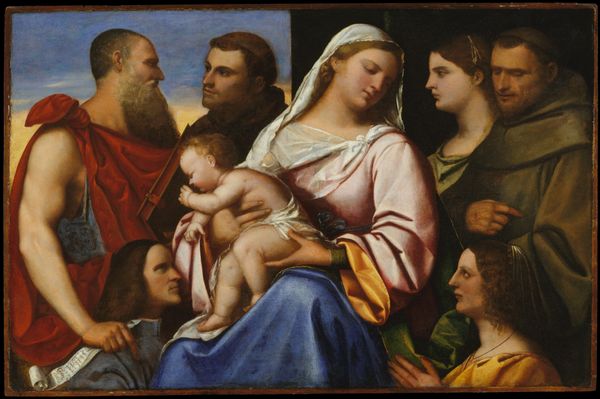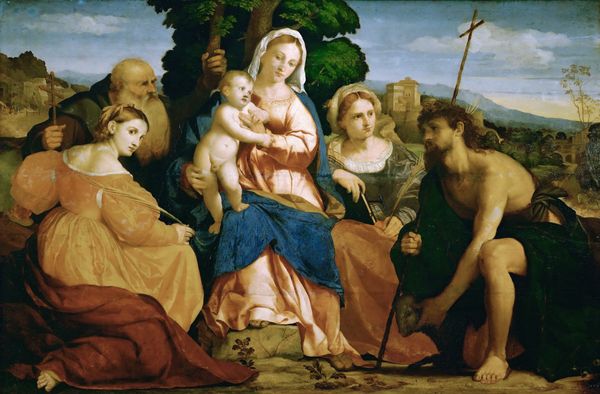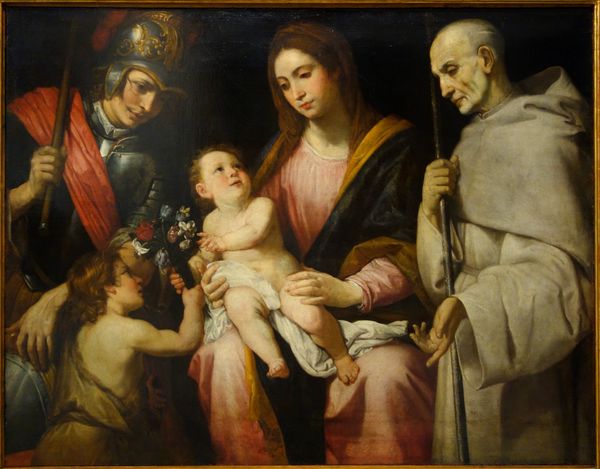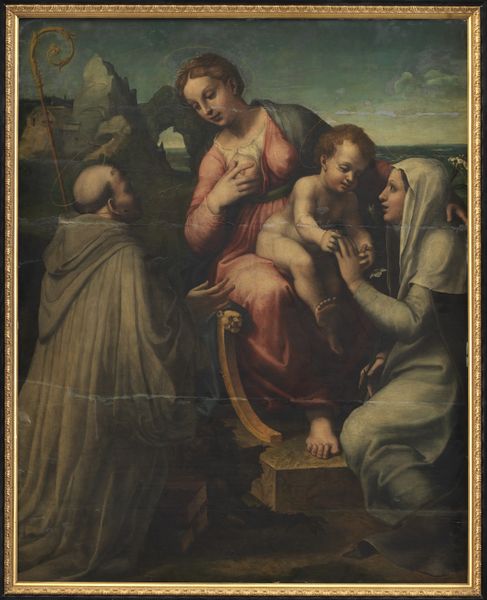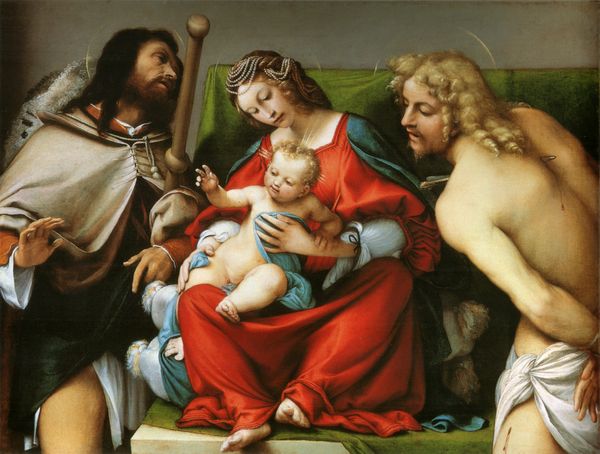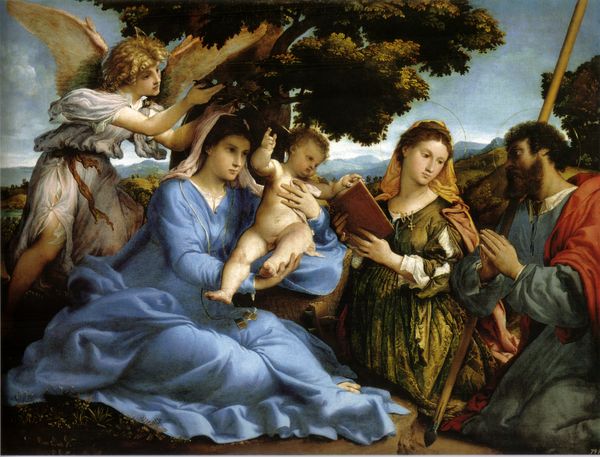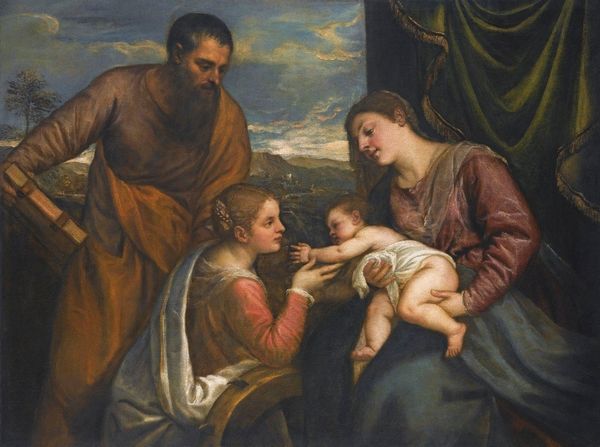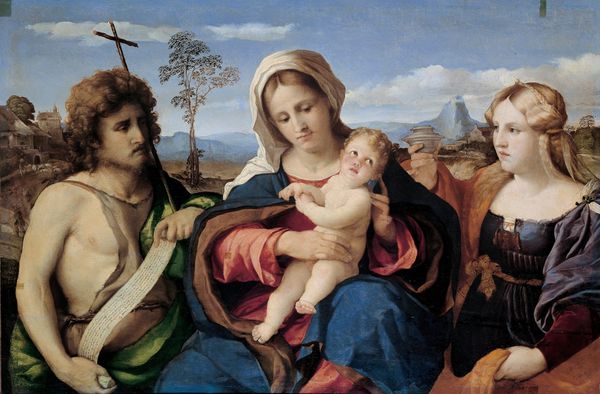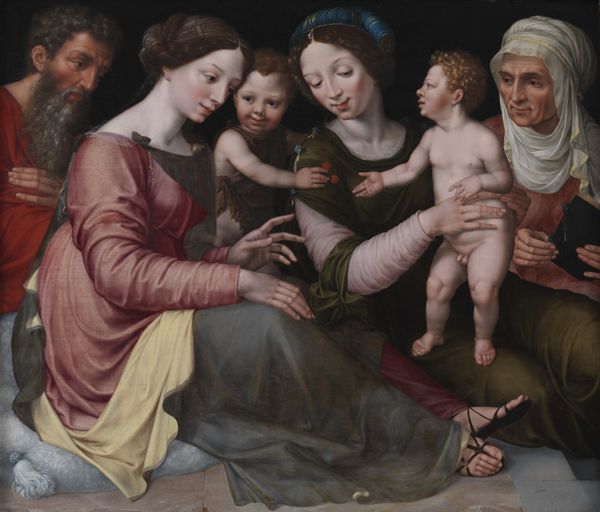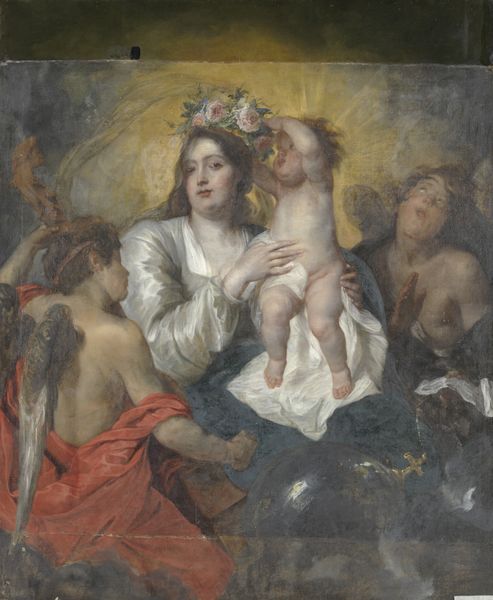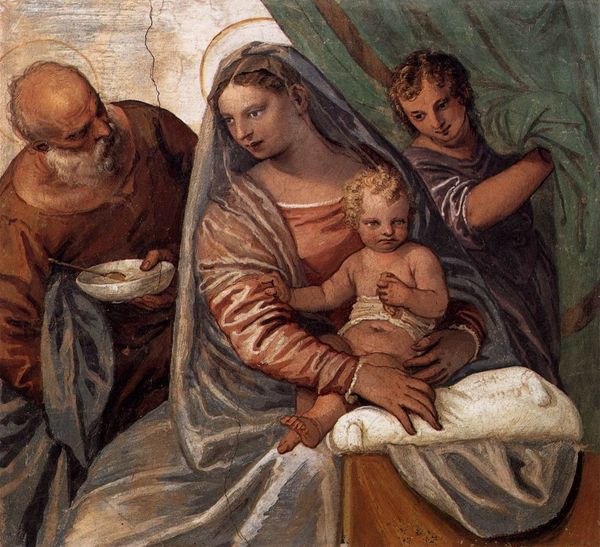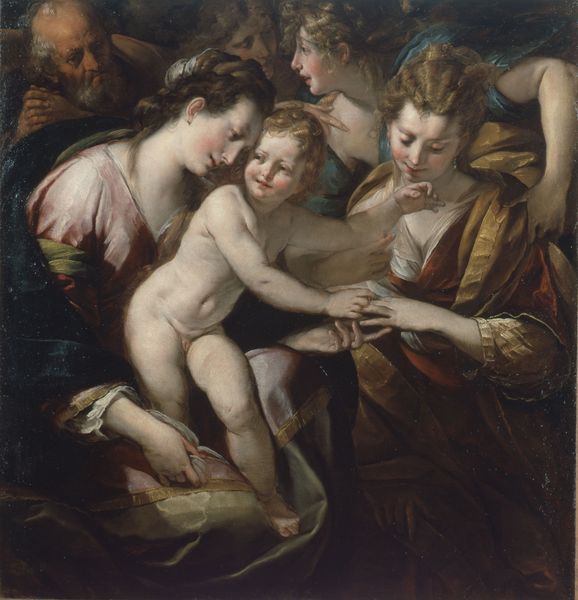
Madonna and Child with Saints 1507 - 1553
0:00
0:00
painting, oil-paint
#
painting
#
oil-paint
#
figuration
#
oil painting
#
group-portraits
#
history-painting
#
italian-renaissance
Dimensions: 32 1/2 x 50 in. (82.6 x 127 cm)
Copyright: Public Domain
Curator: Right now, we're standing in front of Bonifacio Veronese's oil painting, "Madonna and Child with Saints." He painted it sometime between 1507 and 1553. It's quite a tableau! What grabs you first? Editor: Honestly? The globe the baby Jesus is holding. It’s almost…cartoonish in its blueness, isn't it? Against the soft tones of the figures, it feels very intentional, but also kind of…awkwardly placed. And everyone is just crowded so close together, shoulder-to-shoulder like commuters on a train. What does it mean, all of this compression and intensity? Curator: Think about Venice in the 16th century, this isn't just a sacred scene; it’s a statement. These lavish textiles, the detailed armor…this is Venice flaunting its wealth through the application of lapis lazuli ground to make that exact startling blue for the baby's orb. It speaks volumes about artistic patronage during the time of creation and consumption. The layering of glazes! The pigments! Think of the workshop labor! Editor: Ah, right! Okay, yes, there's opulence here. The light feels almost tactile—as if I could run my fingers across the velvet or trace the steel of the Saint’s sword, I think, I can see Venice, showing off. Curator: Showing off, but also crafting an image, a commodity. Look at the Virgin's downcast eyes – that wasn't just her state of mind. The oil paints, specifically, and the move from fresco at the time -- allow such hyperrealistic emotion with their workability and layered effect! Think about her face— it's soft. Like the soft sheen of polished Venetian glass reflecting the subtle expressions we can so deeply read. Editor: And that collective somberness amidst this rich display—maybe it's hinting at the weight of religious expectations and societal pressures back then, where materials dictated expression, labor became a testament, and wealth didn't preclude deeper questions. What do you think Bonifazio might've pondered in his workshop back then? Curator: Maybe how to make heavenly messages gleam even brighter with earthly treasures, or just how the price of ultramarine compared to azurite and what patron had requested the most stunning blue in town! I now wonder how it must’ve been made... Editor: Right? Each brushstroke, a thought, and a challenge to the limits he knew with his craft. Curator: Thank you. A fitting challenge, wonderfully put.
Comments
No comments
Be the first to comment and join the conversation on the ultimate creative platform.
